-
 Bitcoin
Bitcoin $108,165.4587
0.78% -
 Ethereum
Ethereum $2,456.3517
1.15% -
 Tether USDt
Tether USDt $1.0003
0.00% -
 XRP
XRP $2.1934
0.05% -
 BNB
BNB $650.0935
0.52% -
 Solana
Solana $151.3905
2.69% -
 USDC
USDC $0.9998
0.00% -
 TRON
TRON $0.2751
-0.32% -
 Dogecoin
Dogecoin $0.1640
0.87% -
 Cardano
Cardano $0.5631
0.57% -
 Hyperliquid
Hyperliquid $38.7115
4.69% -
 Bitcoin Cash
Bitcoin Cash $493.1868
-0.39% -
 Sui
Sui $2.8217
3.61% -
 Chainlink
Chainlink $13.3994
2.08% -
 UNUS SED LEO
UNUS SED LEO $9.1632
0.94% -
 Avalanche
Avalanche $18.0318
1.97% -
 Stellar
Stellar $0.2388
0.35% -
 Toncoin
Toncoin $2.8763
1.41% -
 Shiba Inu
Shiba Inu $0.0...01160
1.59% -
 Litecoin
Litecoin $86.6393
1.29% -
 Hedera
Hedera $0.1485
0.16% -
 Monero
Monero $315.7948
1.56% -
 Polkadot
Polkadot $3.4240
1.88% -
 Bitget Token
Bitget Token $4.6314
-0.44% -
 Dai
Dai $0.9998
-0.01% -
 Ethena USDe
Ethena USDe $1.0002
-0.01% -
 Uniswap
Uniswap $7.2110
2.59% -
 Aave
Aave $270.6087
6.07% -
 Pi
Pi $0.5350
0.52% -
 Pepe
Pepe $0.0...09545
1.26%
How to judge whether a project's white paper is reliable? What are the key indicators?
A reliable crypto white paper should detail tech, problem, solution, team credentials, tokenomics, roadmap, legal compliance, community engagement, and transparency.
May 08, 2025 at 11:28 am
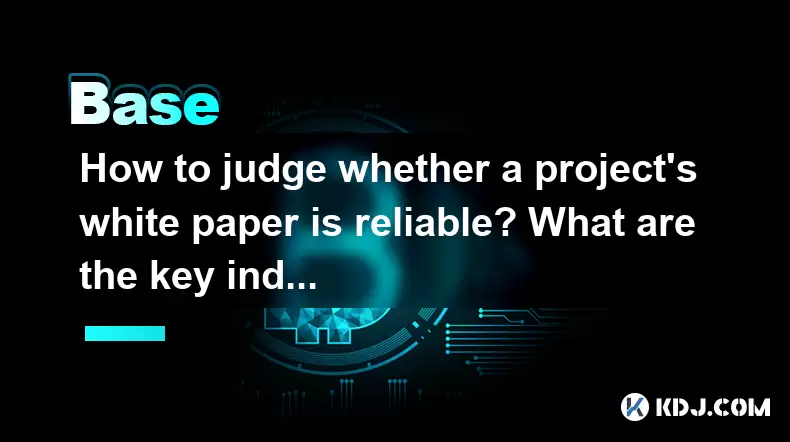
When evaluating the reliability of a cryptocurrency project's white paper, it's crucial to look at various key indicators that can help you determine whether the document is trustworthy and the project itself is legitimate. A white paper is essentially a detailed report or guide prepared by the project team to explain the technology, the problem it aims to solve, and the roadmap to achieve its goals. Here’s how you can assess the reliability of a white paper:
Technical Details and Clarity
A reliable white paper should provide clear and detailed technical information about the project. This includes explanations of the technology, the blockchain architecture, and how the solution will be implemented.
- Look for a clear explanation of the technology: The white paper should describe the underlying technology in a way that is understandable, even to those without a deep technical background. Technical jargon should be explained so that readers can grasp the concepts.
- Detailed architecture: The document should include diagrams and flowcharts that outline the blockchain's architecture. This helps in understanding how different components interact and function.
- Implementation details: The white paper should discuss how the solution will be implemented, including any phases or milestones. Specifics about the development process can indicate a well-thought-out plan.
Problem Statement and Solution
The white paper should clearly define the problem the project aims to solve and how its solution is unique or better than existing solutions.
- Clear problem statement: The document should articulate the problem in a way that is relatable and understandable. The problem should be significant enough to warrant a new blockchain solution.
- Unique solution: The white paper should explain how the project's solution is different or better than existing solutions. Look for a clear value proposition that sets the project apart.
- Market analysis: A reliable white paper often includes a market analysis that demonstrates an understanding of the industry and the competition. This shows that the team has done its homework.
Team and Advisors
The credibility of the team behind the project is a critical factor in assessing the reliability of the white paper.
- Team credentials: The white paper should list the team members and their credentials. Look for experience in blockchain, technology, and the relevant industry. Linkedin profiles or other verifiable sources can help validate their experience.
- Advisors: A strong advisory board can lend credibility to the project. Check the advisors' backgrounds and their relevance to the project. Their involvement can indicate confidence in the project's success.
- Contact information: Reliable projects typically provide ways to contact the team. Look for email addresses, social media handles, or other contact methods.
Tokenomics and Use Case
Understanding the project's tokenomics and the use case for the token is essential in evaluating the white paper's reliability.
- Token distribution: The white paper should detail how the tokens will be distributed, including allocations for the team, advisors, and public sales. A fair and transparent distribution model is a positive indicator.
- Token utility: The document should clearly explain the use case for the token within the ecosystem. The token should have a clear purpose and not just be a means of raising funds.
- Economic model: A reliable white paper will include an economic model that outlines how the token will function within the ecosystem. This should include details on inflation, deflation, and other economic considerations.
Roadmap and Milestones
A detailed roadmap with clear milestones can indicate that the project team has a well-thought-out plan for development and implementation.
- Clear roadmap: The white paper should include a roadmap that outlines the project's development phases. Each phase should have specific milestones and expected completion dates.
- Realistic timeline: The timeline should be realistic and achievable. Overly ambitious timelines can be a red flag.
- Progress updates: Reliable projects often provide regular updates on their progress. Look for evidence of the team meeting or exceeding their milestones.
Legal and Regulatory Compliance
A white paper that addresses legal and regulatory considerations can indicate a project's commitment to compliance and longevity.
- Legal disclaimer: The document should include a legal disclaimer that outlines the risks involved. This shows that the team is aware of and addressing legal considerations.
- Regulatory compliance: The white paper should discuss how the project plans to comply with relevant regulations. This is particularly important for projects operating in heavily regulated industries.
- Jurisdiction: The project's jurisdiction can impact its legal standing. Look for information on where the project is based and how it plans to navigate legal challenges.
Community and Engagement
A strong community and active engagement can be a sign of a reliable project.
- Community presence: The white paper should mention the project's community presence, such as social media channels and forums. Active engagement with the community can indicate a project's legitimacy.
- Feedback and updates: Reliable projects often seek feedback from their community and provide regular updates. Look for evidence of the team listening to and addressing community concerns.
- Partnerships and collaborations: The document may mention partnerships or collaborations with other reputable organizations. These can lend credibility to the project.
Transparency and Accountability
Transparency and accountability are key indicators of a project's reliability.
- Financial transparency: The white paper should provide details on how the funds raised will be used. A clear breakdown of expenses can indicate financial responsibility.
- Audit reports: Reliable projects often undergo audits by third-party firms. Look for audit reports or mentions of audits in the white paper.
- Governance model: The document should outline the project's governance model, including how decisions are made and how the community can participate. A clear governance model can indicate accountability.
Frequently Asked Questions
Q: How can I verify the credentials of the team listed in the white paper?
A: You can verify the credentials of the team by checking their LinkedIn profiles, searching for them on professional networking sites, and looking for any mentions or interviews in reputable blockchain or technology publications. Additionally, you can check if they have contributed to other blockchain projects or have a history of successful ventures.
Q: What should I do if the white paper lacks detailed technical information?
A: If the white paper lacks detailed technical information, it may be a red flag. You can try to find more information through the project's official channels, such as their website, blog, or social media. If you still can't find sufficient technical details, it might be wise to approach the project with caution or look for other projects with more transparent documentation.
Q: How important is the white paper's language and presentation in judging its reliability?
A: The language and presentation of the white paper can be important indicators of its reliability. A well-written and professionally presented white paper can indicate that the team has taken the time to communicate their vision clearly. However, while poor language or presentation can be a red flag, it's important to look at other factors as well, as the quality of the white paper does not always reflect the quality of the project itself.
Q: Can a project with a strong white paper still fail?
A: Yes, a project with a strong white paper can still fail. The white paper is just one part of the overall evaluation process. Other factors, such as market conditions, team execution, and unforeseen challenges, can impact the success of a project. It's important to conduct thorough research and consider multiple sources of information before making any investment decisions.
Disclaimer:info@kdj.com
The information provided is not trading advice. kdj.com does not assume any responsibility for any investments made based on the information provided in this article. Cryptocurrencies are highly volatile and it is highly recommended that you invest with caution after thorough research!
If you believe that the content used on this website infringes your copyright, please contact us immediately (info@kdj.com) and we will delete it promptly.
- South Korea, Crypto, and Global Markets: Riding the Digital Wave to New Highs
- 2025-06-29 20:50:12
- Bitcoin Eyes $108K: Will Trump's Nod Push BTC to a New All-Time High?
- 2025-06-29 21:10:12
- Pengu Pumps: Bullish Flags and Whale Wallets Fuel the Fire!
- 2025-06-29 21:10:12
- XRP to $20,000? Crypto Developers Eyeing Ripple's Potential
- 2025-06-29 21:15:12
- Lido, stETH, and Governance: A New Era of Shared Power?
- 2025-06-29 20:52:14
- Litecoin, Algorand, and the Crypto Landscape: Key Trends and Insights
- 2025-06-29 21:15:12
Related knowledge
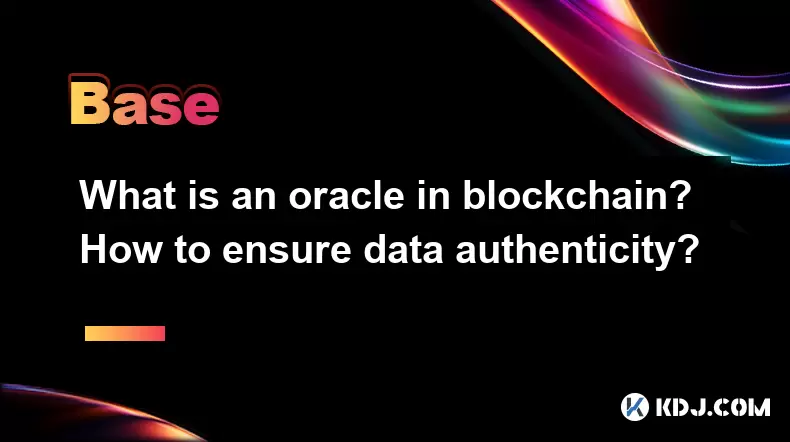
What is an oracle in blockchain? How to ensure data authenticity?
Jun 19,2025 at 08:49pm
Understanding the Role of an Oracle in BlockchainIn the context of blockchain technology, an oracle serves as a bridge between the blockchain and external data sources. While blockchains are inherently secure and decentralized, they cannot access real-world information on their own. Oracles enable smart contracts to interact with off-chain data such as ...
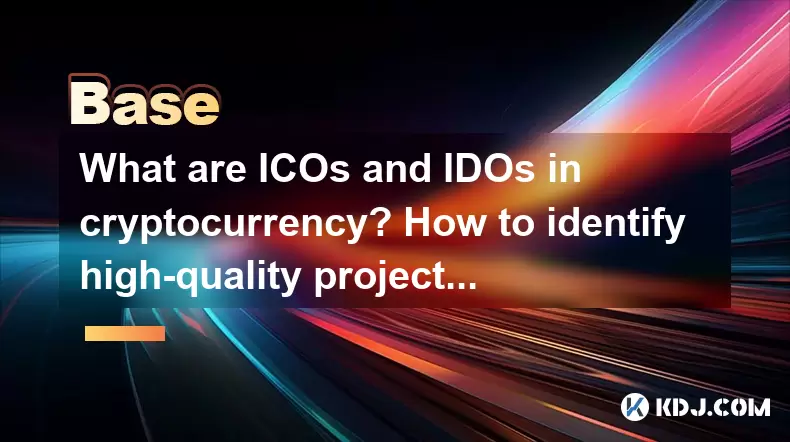
What are ICOs and IDOs in cryptocurrency? How to identify high-quality projects?
Jun 22,2025 at 11:49am
Understanding ICOs in CryptocurrencyInitial Coin Offerings (ICOs) are fundraising mechanisms used by cryptocurrency startups to raise capital for their projects. In an ICO, a company creates and sells its own tokens to investors in exchange for established cryptocurrencies like Bitcoin or Ethereum. The process typically involves the release of a whitepa...
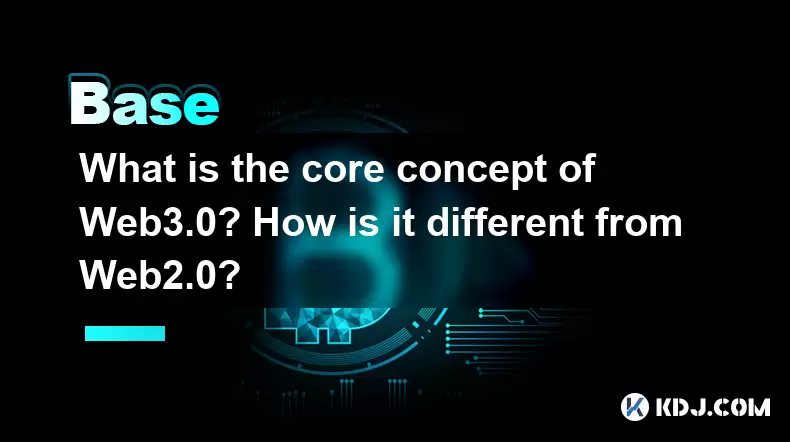
What is the core concept of Web3.0? How is it different from Web2.0?
Jun 21,2025 at 05:56pm
Decentralization as the Foundation of Web3.0The core concept of Web3.0 revolves around decentralization, which fundamentally challenges the centralized architecture of Web2.0. In Web3.0, control and ownership are distributed across a network rather than being held by a central authority or corporation. This is achieved primarily through blockchain techn...
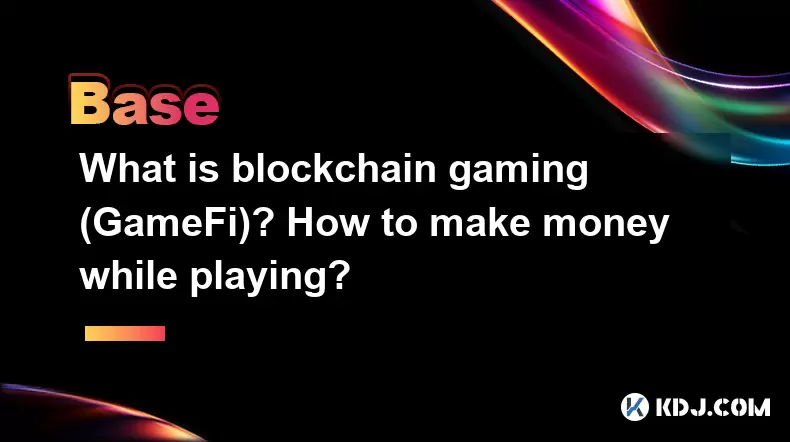
What is blockchain gaming (GameFi)? How to make money while playing?
Jun 20,2025 at 07:56am
Understanding Blockchain Gaming (GameFi)Blockchain gaming, often referred to as GameFi, is a fusion of blockchain technology and video games. It enables players to own in-game assets through non-fungible tokens (NFTs) and earn rewards via cryptocurrencies or token-based systems. Unlike traditional games where items are controlled by centralized develope...
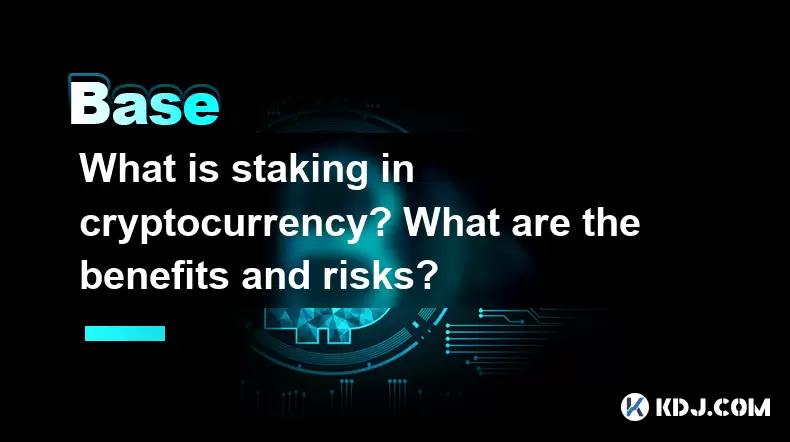
What is staking in cryptocurrency? What are the benefits and risks?
Jun 22,2025 at 10:01am
Understanding the Concept of Staking in CryptocurrencyStaking in cryptocurrency refers to the process of actively participating in transaction validation on a blockchain network that uses a Proof-of-Stake (PoS) consensus mechanism. Instead of miners competing to solve complex mathematical puzzles as in Proof-of-Work systems like Bitcoin, PoS blockchains...
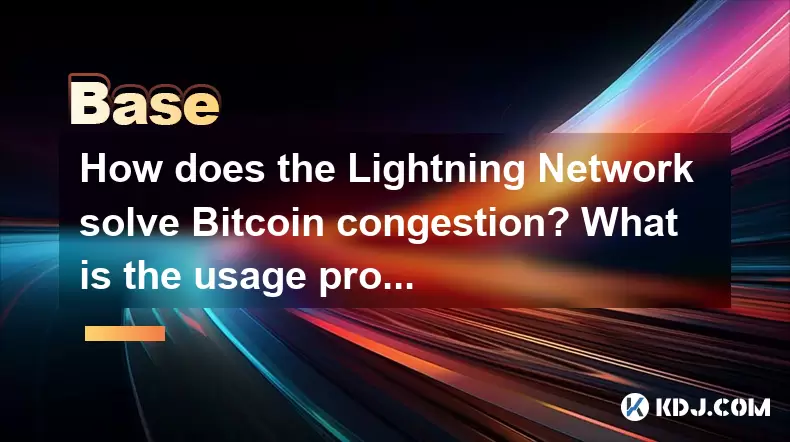
How does the Lightning Network solve Bitcoin congestion? What is the usage process?
Jun 23,2025 at 06:21pm
Understanding Bitcoin Network CongestionBitcoin, as a decentralized digital currency, operates on a blockchain that records every transaction in a public ledger. Each block has a limited size, typically 1 megabyte, which allows for only a certain number of transactions per second (TPS). When the number of transactions increases, the network becomes cong...

What is an oracle in blockchain? How to ensure data authenticity?
Jun 19,2025 at 08:49pm
Understanding the Role of an Oracle in BlockchainIn the context of blockchain technology, an oracle serves as a bridge between the blockchain and external data sources. While blockchains are inherently secure and decentralized, they cannot access real-world information on their own. Oracles enable smart contracts to interact with off-chain data such as ...

What are ICOs and IDOs in cryptocurrency? How to identify high-quality projects?
Jun 22,2025 at 11:49am
Understanding ICOs in CryptocurrencyInitial Coin Offerings (ICOs) are fundraising mechanisms used by cryptocurrency startups to raise capital for their projects. In an ICO, a company creates and sells its own tokens to investors in exchange for established cryptocurrencies like Bitcoin or Ethereum. The process typically involves the release of a whitepa...

What is the core concept of Web3.0? How is it different from Web2.0?
Jun 21,2025 at 05:56pm
Decentralization as the Foundation of Web3.0The core concept of Web3.0 revolves around decentralization, which fundamentally challenges the centralized architecture of Web2.0. In Web3.0, control and ownership are distributed across a network rather than being held by a central authority or corporation. This is achieved primarily through blockchain techn...

What is blockchain gaming (GameFi)? How to make money while playing?
Jun 20,2025 at 07:56am
Understanding Blockchain Gaming (GameFi)Blockchain gaming, often referred to as GameFi, is a fusion of blockchain technology and video games. It enables players to own in-game assets through non-fungible tokens (NFTs) and earn rewards via cryptocurrencies or token-based systems. Unlike traditional games where items are controlled by centralized develope...

What is staking in cryptocurrency? What are the benefits and risks?
Jun 22,2025 at 10:01am
Understanding the Concept of Staking in CryptocurrencyStaking in cryptocurrency refers to the process of actively participating in transaction validation on a blockchain network that uses a Proof-of-Stake (PoS) consensus mechanism. Instead of miners competing to solve complex mathematical puzzles as in Proof-of-Work systems like Bitcoin, PoS blockchains...

How does the Lightning Network solve Bitcoin congestion? What is the usage process?
Jun 23,2025 at 06:21pm
Understanding Bitcoin Network CongestionBitcoin, as a decentralized digital currency, operates on a blockchain that records every transaction in a public ledger. Each block has a limited size, typically 1 megabyte, which allows for only a certain number of transactions per second (TPS). When the number of transactions increases, the network becomes cong...
See all articles

























































































